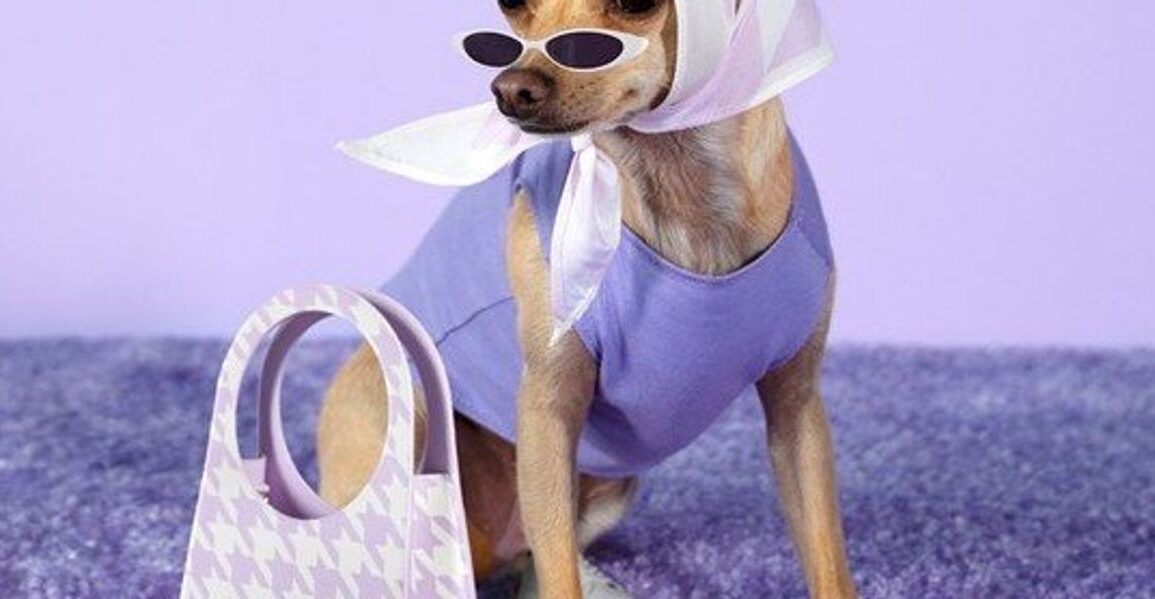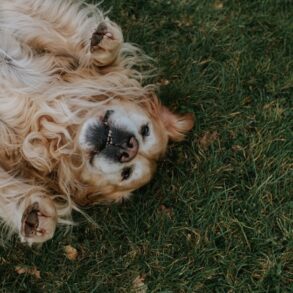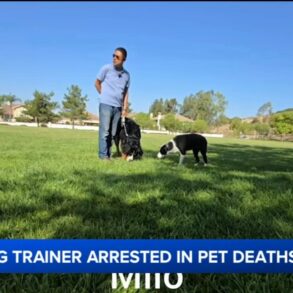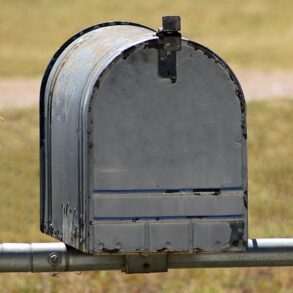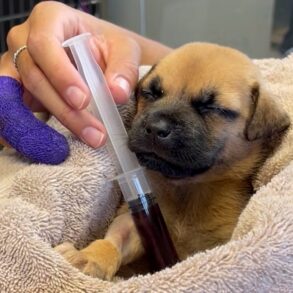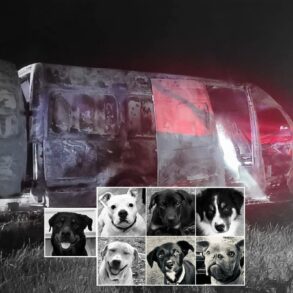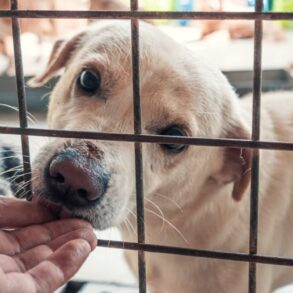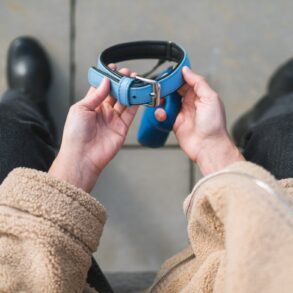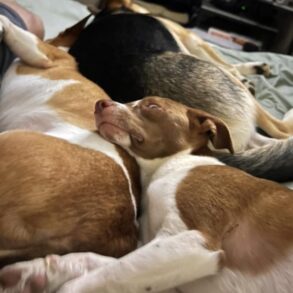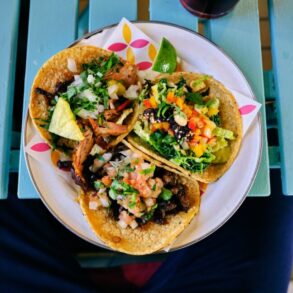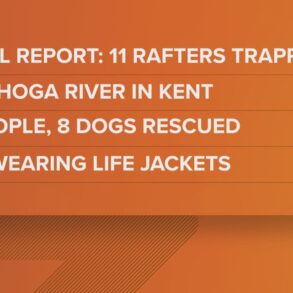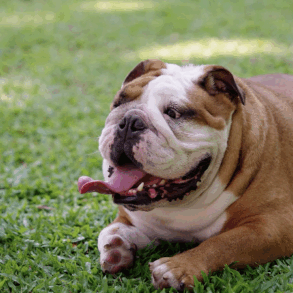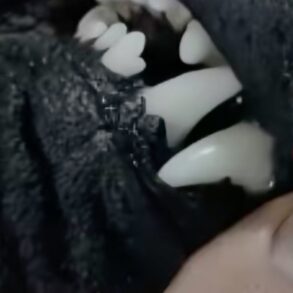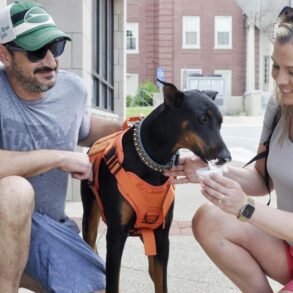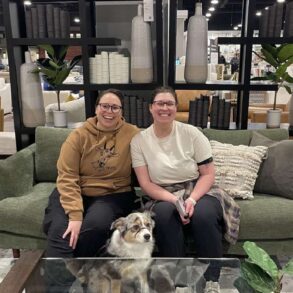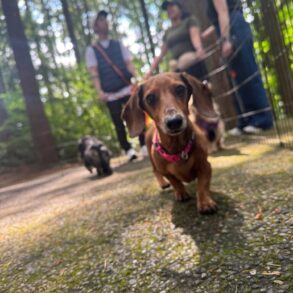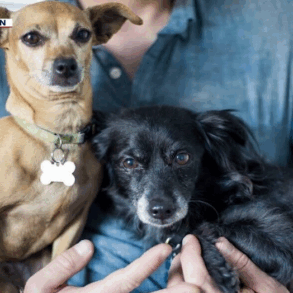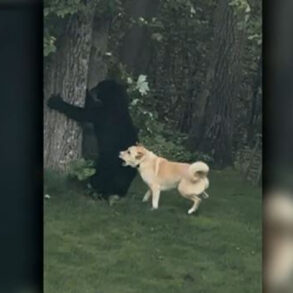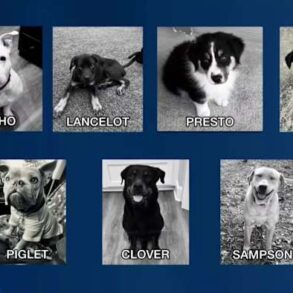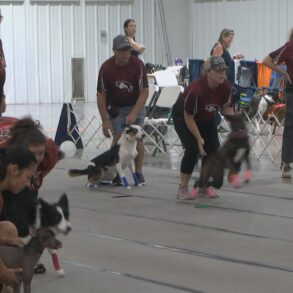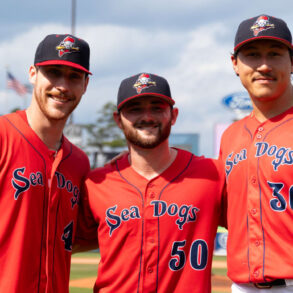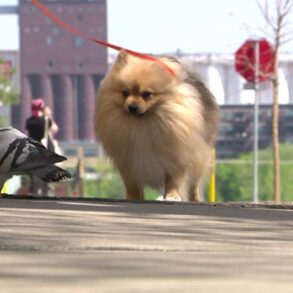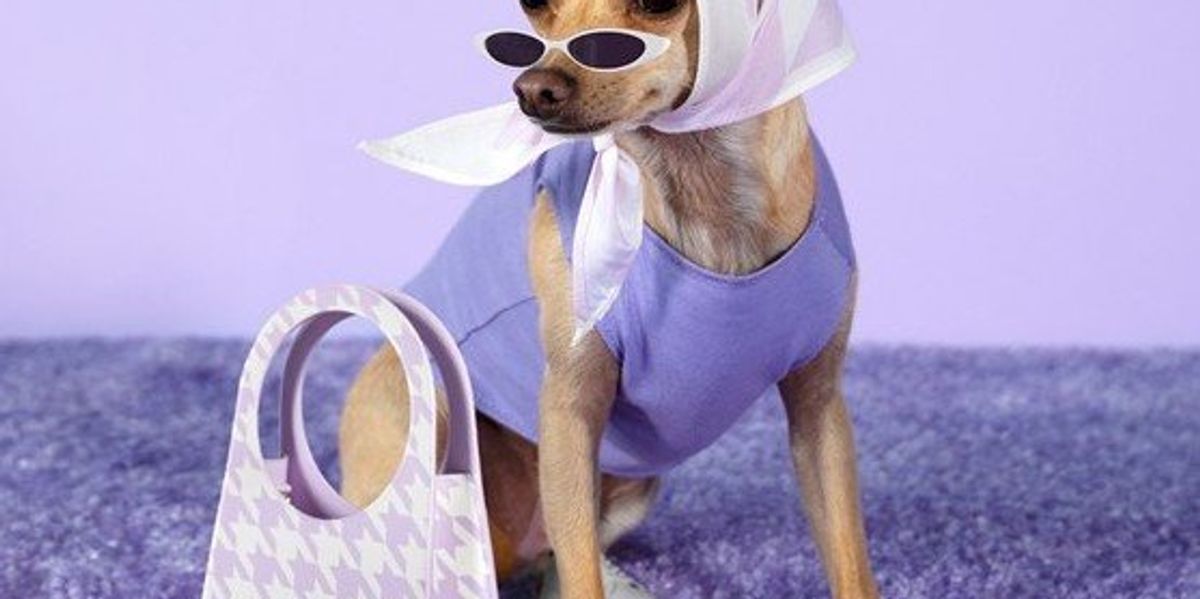
NICE — Sitting on the terrace of the trendy Les Mimosas in Nice, Charlotte– a young thirty-something architect–orders a local craft beer. And for Pita, her six-month-old cocker spaniel, curled up on her lap, the Delamour ice cream. This roast chicken-flavored treat is in fact a food supplement developed by the ice cream maker, in collaboration with a veterinarian. The brand’s next product: A range of sponge cakes with prebiotics and superfoods.
✉️ You can receive our Bon Vivant selection of fresh reads on international culture, food & travel directly in your inbox. Subscribe here.
Delamour is not (just) the wacky project of a dog lover in search of a career change. A former lawyer and investment banker, Jordan Zaluski, who launched the brand at the end of 2023, knows the pet food market well, to the point that his products — “exceptional food rituals for dogs” — are now on the menu of luxury establishments, such as the Hôtel de Paris in Monaco or Le Château de La Messardière in Saint-Tropez.
And he is currently negotiating for a place on the shelves of the upscale Grande Epicerie de Paris grocery store. The epitome of “pet food” brands’ success, which today, goes far beyond the pet section of supermarkets.
At the end of 2023, a study by the Xerfi institute revealed that the 2022 sales of pet products (including pet food) reached 5.8 billion euros in France, a 48% increase in 10 years. On a global scale, this market is expected to reach $5 trillion dollars by 2030. A sign of its vitality, the sector is invaded by startups raising substantial funds one after the other.
“Is the canine concept store the new pastry professional certificate?” jokes journalist Mylène Bertaux in her investigative book Toutoute. “Pets represent an enormous part in the world of business. Pet food equals 20% of the revenues of the agri-food giants. It is a colossal market in which small niche brands are emerging, proposing upcycled leashes or dog food sharing the codes of human food, lactose-free or gluten-free.”
Canine spas, perfumes and luxury accessories
As it expands and moves upmarket, the pet market follows the trends of human consumption: made in France, eco-friendly, luxury accessories. The country counts nearly 75 million domestic animals (twice as many as in 1976), with one in two households now owning a pet. And these owners’ expenses increase continuously to include clothing, accessories, care, training or tech items.
Dog-sitter Vans coming to pick up dogs to take them for a walk in Paris’ Bois de Boulogne park have invaded the posh neighborhoods of the capital. Some of them will follow up with a behavioral therapy session.
And rather than ending up on a family friend’s couch for the holidays, they will have their reservation in a boutique hotel, such as Alpha Dogs’ House, a dog boarding kennel in the south of Paris, with a concept store and a “canispa” that offers massage and light therapy sessions.
Dogs are increasingly present in the communication of luxury brands.
Of course, the world of luxury has not missed the opportunity to step in. Celine’s dog accessories include a lambskin bowl and a plastic toy featuring the brand’s Triomphe monogram (at 160 euros, let’s hope your dog brings it back when you throw it). Dior Men and Prada sell leashes.
“Dogs are increasingly present in the communication of luxury brands,” says Yoann Latouche, columnist and a key figure in the pet sector. Dolce & Gabbana has just launched its dog perfume that costs almost 100 euros, AMI has featured a German mastiff in its latest campaign and Simon Porte’s Jacquemus, who has been sharing a lot about the adoption of his dog, has two posing with Jules Koundé in his latest campaign. Having a dog has become stylish.”
Social media stars
The days when people laughed at “granny’s poodle” or at “cat ladies” are gone. “I often make the parallel with sports,” explains Jordan Zaluski. “Twenty years ago, being a sports fan was for strange people. Showing off your dog was not really something people did. Today, it’s a statement.” As proof: The population of pet owners is getting younger.
“Figures show that the working and upper classes spend almost as much on their pets, around 100 euros per month,” notes Bertaux. “But among young people, this budget reaches 150 euros per month. The difference is not social, it’s generational.” According to a 2020 Ifop survey, 60% of dog owners are between 25 and 34 years old. And for many of them, their canine is a trophy.
On social media, 20 years after LOLcats sanctified the cat as the ultimate animal of the internet era, some breeds of dogs are breaking virality records and creating real trends among breeds. Like the dogs used to pose with their bourgeois masters in the pictures of the late 19th century, pets are today influencers.
In Seoul, more dog strollers were sold last year than baby strollers.
Olivia Benson, Taylor Swift‘s Scottish Fold cat, is worth almost 100 million dollars. Or maybe you’d rather follow the footvolley games of Floki, a 3-year-old border collie, who attracts tourists and locals every weekend on the beach of Ipanema, Brazil.
“This kind of content works very well,” says Yoann Latouche, whose agency manages lifestyle influencers who own animals as well as petfluencers. “The engagement rate for animal accounts is up to two times higher. It’s quite unreal, people subscribe very easily. It’s easier to make a dog account grow than a human account.”
Social media are maybe where this new place granted to domestic animals is most visible. The people who feed accounts with cute videos are no longer the “owners” of their pets. They are their parents. When an influencer talks to you about “her son,” it’s a safe bet that he has four legs. In his essay on canine sociology, Christophe Blanchard believes that “the dog has gone from the kennel to the sofa.”
“We can now say that he has gone all the way to the bedroom,” Bertaux adds. In Seoul, more dog strollers were sold last year than baby strollers.”
The era of “dog parents”
This shift from baby to animal can also be observed through brand strategies. “Where the birth rate is falling, pet ownership is rising,” notes Yoann Latouche. At the beginning of my career, I worked at Procter & Gamble, who anticipated a decline in growth of its diaper brands in developed countries and, to offset it, had acquired a pet food brand, for which I was to take care of the ambassadors.”
It’s a “great replacement” that had caused a stir: Pope Francis himself regretted during the first general audience of 2022 at the Vatican that pets “sometimes take the place of children.”
“Those it annoys are those who are not open to societal transitions of any kind,” says Hélène Gateau, author of the 2023 book Why I chose to have a dog (but not a child). In it, she writes about a new form of parenting with Colonel, her border terrier. “This statement resonated with many people who end up in this situation but do not feel comfortable with it, because there is still something taboo about it,” Gateau says.
“Today, however, I feel like there is much more to it, whether you look at consumer trends or listen to what those who are concerned say. I have a fusional relationship and a real maternal feeling that I no longer question. This parenthood is enough for me and it fulfills me: I take care of Colonel, I come up with activities so he can learn and be smart, so that I can be proud of him. I’m giving him a rich and happy life.”
Is this a form of anthropomorphism? Gateau disagrees, saying “I chose a dog also because it is not a child. The fact that he is a dog and that he makes my life richer because of this difference is what I find interesting.”
Reconnection to nature
From the utilitarian animal used for hunting or herding, to the domestic animal, has the dog become our codependent? “In the history of domestication, the dog is the animal with whom we have had the longest relationship,” explains Emilie Dardenne, expert in animal studies and professor at Rennes 2 University.
“Today, this relationship is less logistical, less technical, more linked to the family but still utilitarian nonetheless: The dog comes as a response to human needs related to intimacy, emotions,” Dardenne says. “What is particular about the dog is that it offers an ontological security that human relationships no longer provide.”
This relationship is making its way to literature. The infinite love for one’s pet, the devastation a loss causes, are all materials for writers. “A phenomenon that existed within a limited circle but which is intensifying, confirming how much animals have become a real part of society,” says historian Eric Baratay, specialist in human-animal relations.
Owning a pet is an indicator of development for a country.
In Chien perdu et autres chiens trouvés (Lost dog and other dogs found), Alain Veinstein reports the fictional story of a man devastated by the loss of his dog. Director and writer Ovidie makes the dog “women’s best friend” in her book Assise, debout, couchée (Sit, up, lay down), published in 2024, and sold more than 15,000 copies. And Son odeur après la pluie (His smell after the rain) by Cédric Sapin-Defour, winner of the 41st “Goncourt des animaux” book award dedicated to animals, has become a true literary phenomenon.
This emotional relationship between humans and their animals has also interested scientists over the past 30 years. Tehir research shows the virtues of this companionship on our moods, stress and self-esteem. Animals may also have the ability to reconnect us to nature and a living world from which we are often cut off.
“Owning a pet is an indicator of development for a country,” according to Bertaux. “We see it at work in big cities and I believe that it is no coincidence. For a whole new generation of young urban dwellers, pets embody this discovery of nature, this first connection with it.” All roads lead to ecology.
Canine spas, perfumes and luxury accessories
As it expands and moves upmarket, the pet market follows the trends of human consumption: made in France, eco-friendly, luxury accessories. The country counts nearly 75 million domestic animals (twice as many as in 1976), with one in two households now owning a pet. And these owners’ expenses increase continuously to include clothing, accessories, care, training or tech items.
Dog-sitter Vans coming to pick up dogs to take them for a walk in Paris’ Bois de Boulogne park have invaded the posh neighborhoods of the capital. Some of them will follow up with a behavioral therapy session.
And rather than ending up on a family friend’s couch for the holidays, they will have their reservation in a boutique hotel, such as Alpha Dogs’ House, a dog boarding kennel in the south of Paris, with a concept store and a “canispa” that offers massage and light therapy sessions.
Dogs are increasingly present in the communication of luxury brands.
Of course, the world of luxury has not missed the opportunity to step in. Celine’s dog accessories include a lambskin bowl and a plastic toy featuring the brand’s Triomphe monogram (at 160 euros, let’s hope your dog brings it back when you throw it). Dior Men and Prada sell leashes.
“Dogs are increasingly present in the communication of luxury brands,” says Yoann Latouche, columnist and a key figure in the pet sector. Dolce & Gabbana has just launched its dog perfume that costs almost 100 euros, AMI has featured a German mastiff in its latest campaign and Simon Porte’s Jacquemus, who has been sharing a lot about the adoption of his dog, has two posing with Jules Koundé in his latest campaign. Having a dog has become stylish.”
Social media stars
The days when people laughed at “granny’s poodle” or at “cat ladies” are gone. “I often make the parallel with sports,” explains Jordan Zaluski. “Twenty years ago, being a sports fan was for strange people. Showing off your dog was not really something people did. Today, it’s a statement.” As proof: The population of pet owners is getting younger.
“Figures show that the working and upper classes spend almost as much on their pets, around 100 euros per month,” notes Bertaux. “But among young people, this budget reaches 150 euros per month. The difference is not social, it’s generational.” According to a 2020 Ifop survey, 60% of dog owners are between 25 and 34 years old. And for many of them, their canine is a trophy.
On social media, 20 years after LOLcats sanctified the cat as the ultimate animal of the internet era, some breeds of dogs are breaking virality records and creating real trends among breeds. Like the dogs used to pose with their bourgeois masters in the pictures of the late 19th century, pets are today influencers.
In Seoul, more dog strollers were sold last year than baby strollers.
Olivia Benson, Taylor Swift‘s Scottish Fold cat, is worth almost 100 million dollars. Or maybe you’d rather follow the footvolley games of Floki, a 3-year-old border collie, who attracts tourists and locals every weekend on the beach of Ipanema, Brazil.
“This kind of content works very well,” says Yoann Latouche, whose agency manages lifestyle influencers who own animals as well as petfluencers. “The engagement rate for animal accounts is up to two times higher. It’s quite unreal, people subscribe very easily. It’s easier to make a dog account grow than a human account.”
Social media are maybe where this new place granted to domestic animals is most visible. The people who feed accounts with cute videos are no longer the “owners” of their pets. They are their parents. When an influencer talks to you about “her son,” it’s a safe bet that he has four legs. In his essay on canine sociology, Christophe Blanchard believes that “the dog has gone from the kennel to the sofa.”
“We can now say that he has gone all the way to the bedroom,” Bertaux adds. In Seoul, more dog strollers were sold last year than baby strollers.”
The era of “dog parents”
This shift from baby to animal can also be observed through brand strategies. “Where the birth rate is falling, pet ownership is rising,” notes Yoann Latouche. At the beginning of my career, I worked at Procter & Gamble, who anticipated a decline in growth of its diaper brands in developed countries and, to offset it, had acquired a pet food brand, for which I was to take care of the ambassadors.”
It’s a “great replacement” that had caused a stir: Pope Francis himself regretted during the first general audience of 2022 at the Vatican that pets “sometimes take the place of children.”
“Those it annoys are those who are not open to societal transitions of any kind,” says Hélène Gateau, author of the 2023 book Why I chose to have a dog (but not a child). In it, she writes about a new form of parenting with Colonel, her border terrier. “This statement resonated with many people who end up in this situation but do not feel comfortable with it, because there is still something taboo about it,” Gateau says.
“Today, however, I feel like there is much more to it, whether you look at consumer trends or listen to what those who are concerned say. I have a fusional relationship and a real maternal feeling that I no longer question. This parenthood is enough for me and it fulfills me: I take care of Colonel, I come up with activities so he can learn and be smart, so that I can be proud of him. I’m giving him a rich and happy life.”
Is this a form of anthropomorphism? Gateau disagrees, saying “I chose a dog also because it is not a child. The fact that he is a dog and that he makes my life richer because of this difference is what I find interesting.”
Reconnection to nature
From the utilitarian animal used for hunting or herding, to the domestic animal, has the dog become our codependent? “In the history of domestication, the dog is the animal with whom we have had the longest relationship,” explains Emilie Dardenne, expert in animal studies and professor at Rennes 2 University.
“Today, this relationship is less logistical, less technical, more linked to the family but still utilitarian nonetheless: The dog comes as a response to human needs related to intimacy, emotions,” Dardenne says. “What is particular about the dog is that it offers an ontological security that human relationships no longer provide.”
This relationship is making its way to literature. The infinite love for one’s pet, the devastation a loss causes, are all materials for writers. “A phenomenon that existed within a limited circle but which is intensifying, confirming how much animals have become a real part of society,” says historian Eric Baratay, specialist in human-animal relations.
Owning a pet is an indicator of development for a country.
In Chien perdu et autres chiens trouvés (Lost dog and other dogs found), Alain Veinstein reports the fictional story of a man devastated by the loss of his dog. Director and writer Ovidie makes the dog “women’s best friend” in her book Assise, debout, couchée (Sit, up, lay down), published in 2024, and sold more than 15,000 copies. And Son odeur après la pluie (His smell after the rain) by Cédric Sapin-Defour, winner of the 41st “Goncourt des animaux” book award dedicated to animals, has become a true literary phenomenon.
This emotional relationship between humans and their animals has also interested scientists over the past 30 years. Tehir research shows the virtues of this companionship on our moods, stress and self-esteem. Animals may also have the ability to reconnect us to nature and a living world from which we are often cut off.
“Owning a pet is an indicator of development for a country,” according to Bertaux. “We see it at work in big cities and I believe that it is no coincidence. For a whole new generation of young urban dwellers, pets embody this discovery of nature, this first connection with it.” All roads lead to ecology.
From Your Site Articles
Related Articles Around the Web
This post was originally published on this site be sure to check out more of their content.




